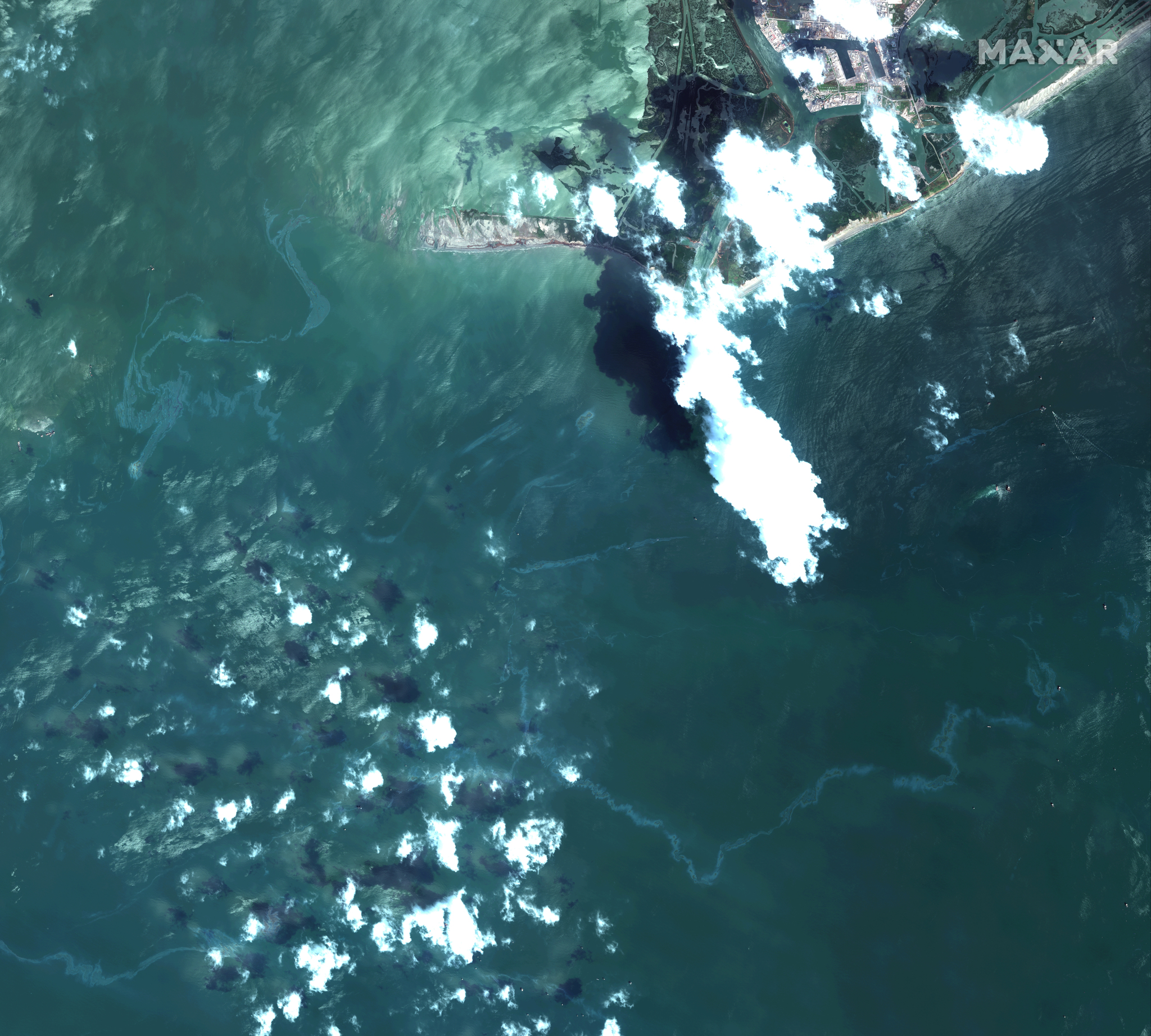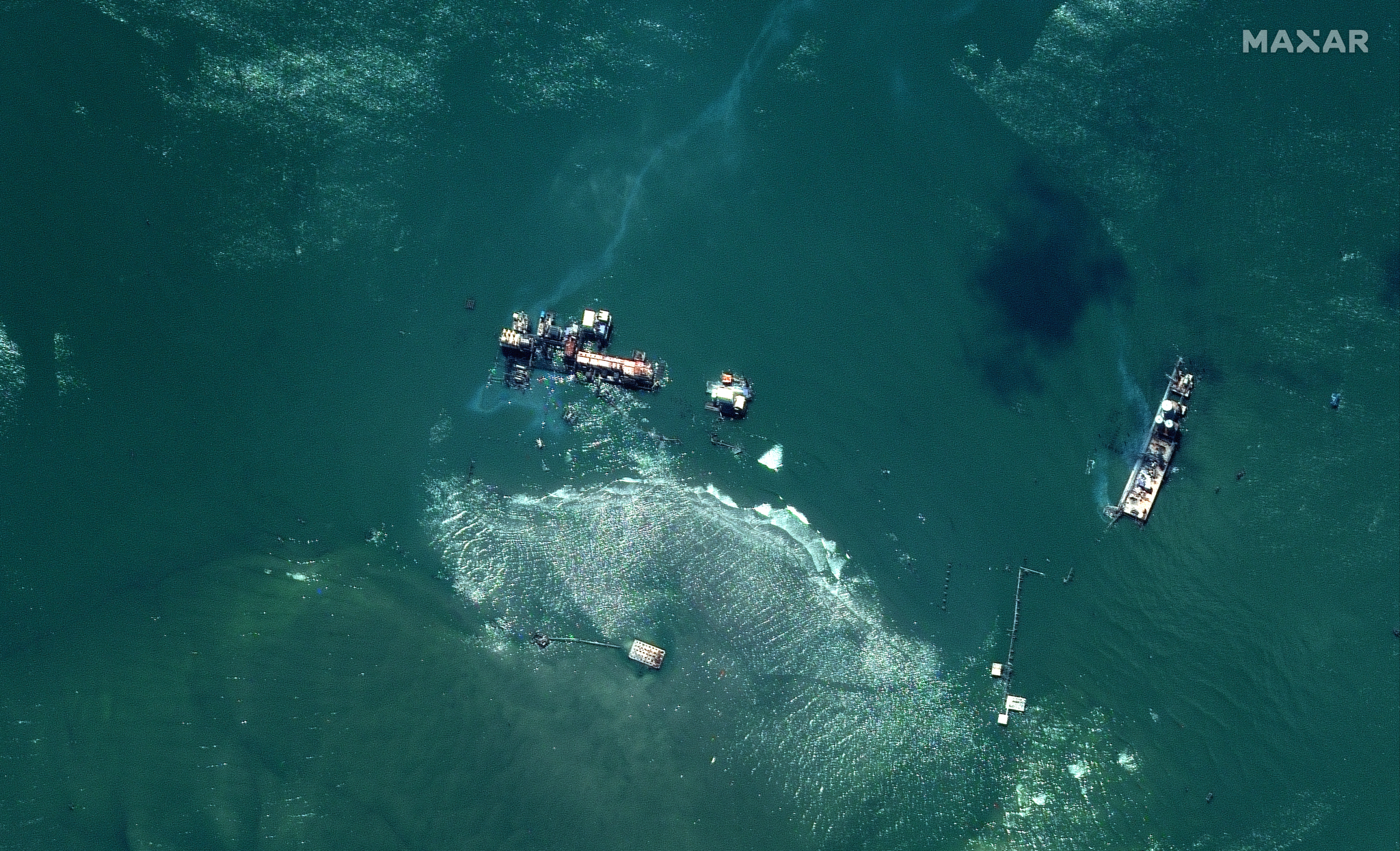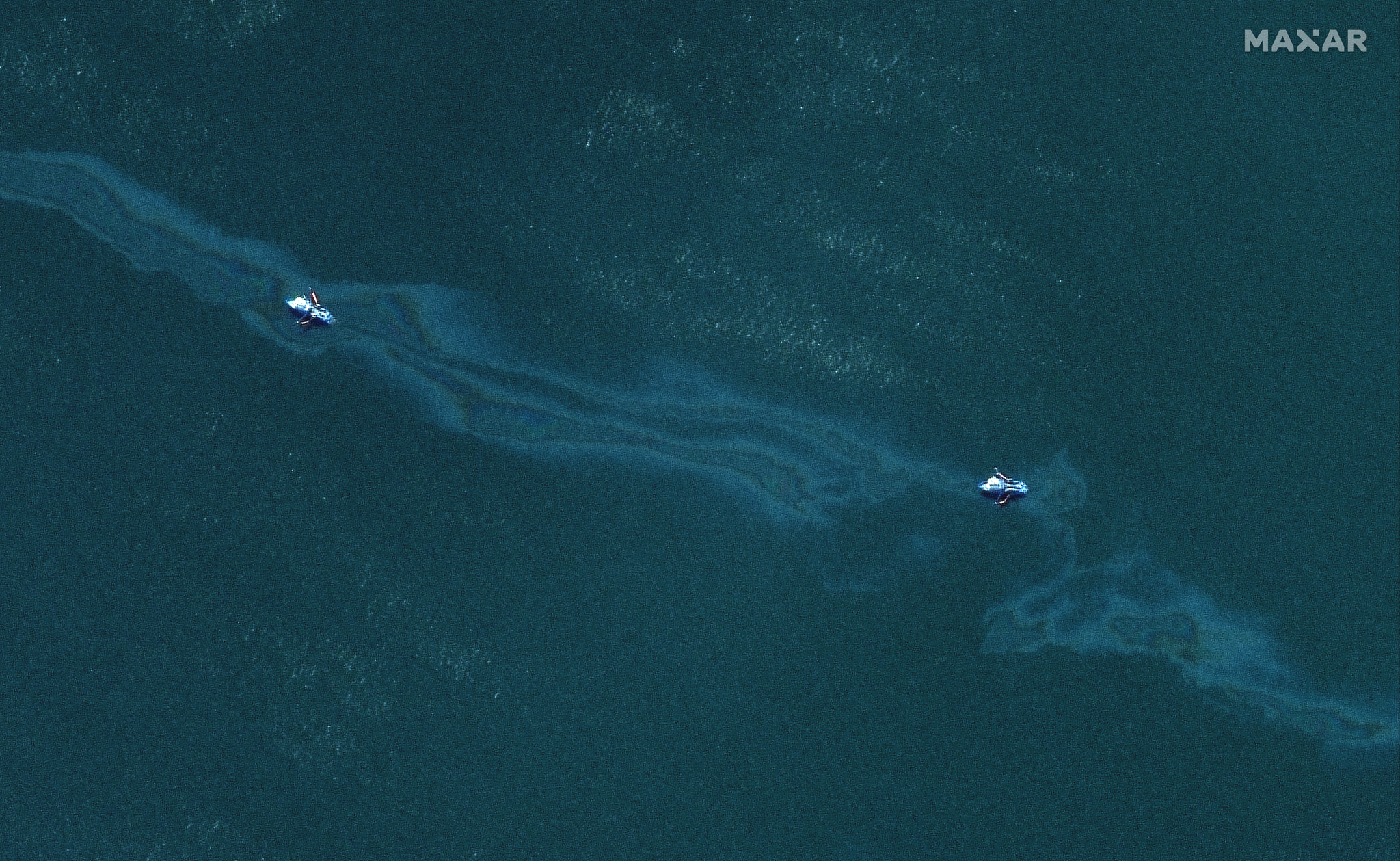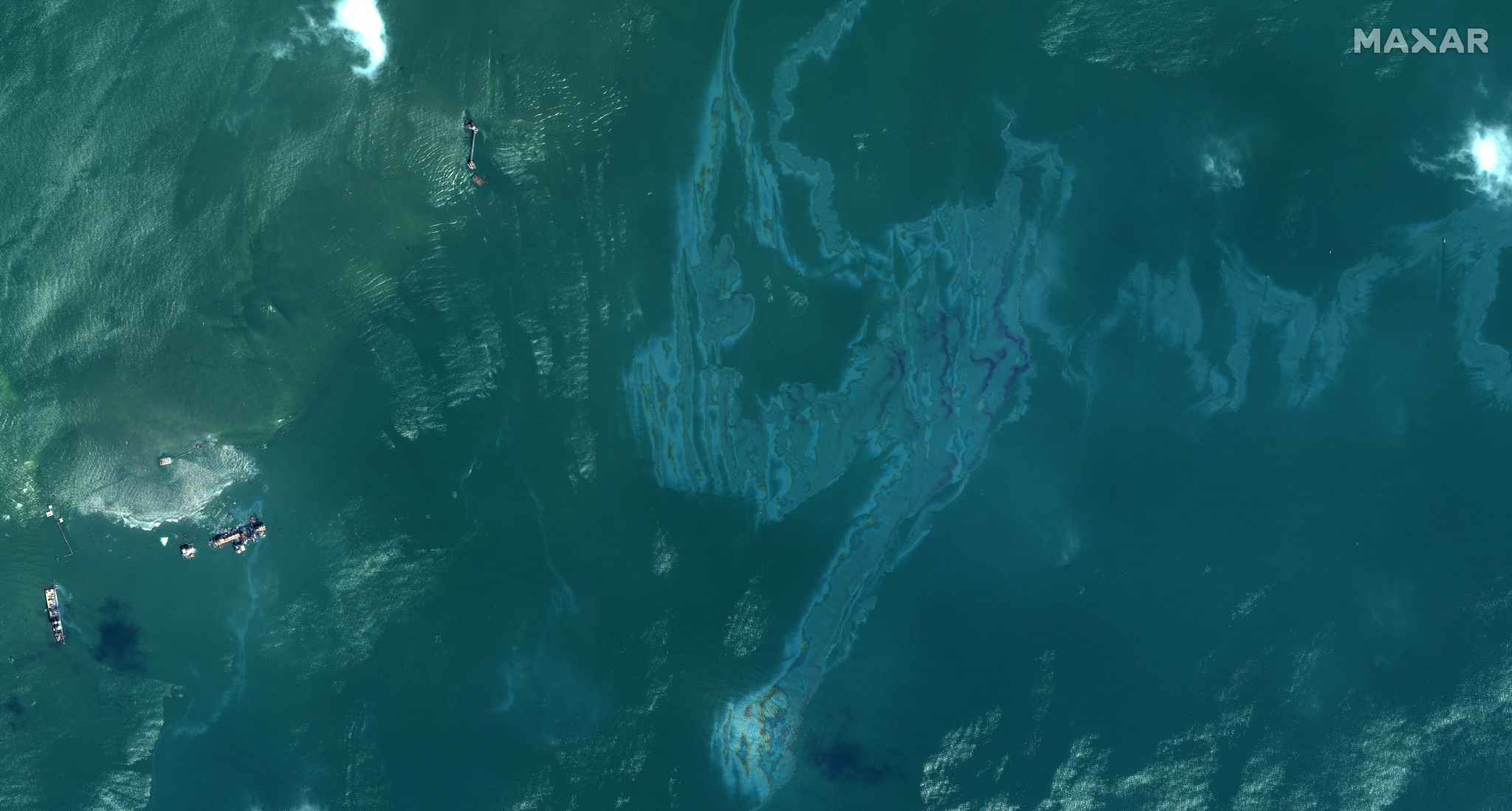In Hurricane Ida's wake, satellite images show oil slicks in Gulf of Mexico

Satellite images have captured aerial views of an oil spill in the Gulf of Mexico a week after Hurricane Ida pummeled the region.
Hurricane Ida made landfall near Port Fourchon, Louisiana, as a Category 4 hurricane on Aug. 29, bringing sustained winds of around 150 mph (240 kph), torrential rainfall and a powerful storm surge, causing flooding along much of the coast. The hurricane also appears to have caused a sizable oil spill in the Gulf of Mexico that is visible from space in Sept. 4 images captured by a Maxar Technologies satellite.
Divers identified a ruptured pipeline, located about 2 miles (3 kilometers) south of Port Fourchon, as the underwater source of the spill. The pipeline, measuring 1 foot (30 centimeters) in diameter, was displaced from a trench on the ocean floor during the storm, causing it to burst open, the Associated Press reported.
Related: Hurricane Ida from space: Photos from astronauts and satellites
The satellite images show oil slicks, or dark brown and black streaks of oil floating on the surface of the water, near the East Timbalier National Wildlife Refuge, south of Port Fourchon.
Cleanup crews are working in the area to mitigate the oil spill, which spans at least 10 miles (16 km) and appears to be drifting eastward along the Gulf Coast, according to the Associated Press. The broken pipe is located in relatively shallow water, roughly 34 feet (10 meters) deep.
So far, reports suggest that the oil spill has remained out to sea and not impacted the Louisiana shoreline. While crews have yet to provide an estimate of how much oil has leaked into the water, the rate at which oil was appearing on the ocean surface has slowed, according to the Associated Press report.
Get the Space.com Newsletter
Breaking space news, the latest updates on rocket launches, skywatching events and more!



Divers investigating the area also found two additional, smaller pipelines that are open and apparently abandoned. While it is not clear whether those pipelines, which measure 4 inches (10 cm) in diameter, are also leaking oil, the Maxar satellite images show at least three different slicks in the same area.
Talos Energy, a Houston-based company, hired Clean Gulf Associates — a nonprofit oil-spill response cooperative — to mitigate further spread of the oil. The oil company is also investigating the cause of the leak, even though they have said that the broken pipeline does not belong to them.
The National Oceanic and Atmospheric Administration (NOAA) also shared aerial views captured on Sept. 2 of the area where the oil spill occurred. The NOAA images show a dark streak — an indication of thick, heavy oil — surrounded by a rainbow sheen, The New York Times reported.
Follow Samantha Mathewson @Sam_Ashley13. Follow us on Twitter @Spacedotcom and on Facebook.
Join our Space Forums to keep talking space on the latest missions, night sky and more! And if you have a news tip, correction or comment, let us know at: community@space.com.

Samantha Mathewson joined Space.com as an intern in the summer of 2016. She received a B.A. in Journalism and Environmental Science at the University of New Haven, in Connecticut. Previously, her work has been published in Nature World News. When not writing or reading about science, Samantha enjoys traveling to new places and taking photos! You can follow her on Twitter @Sam_Ashley13.










